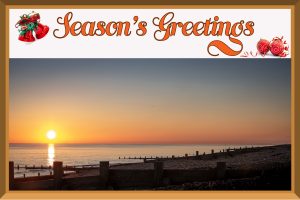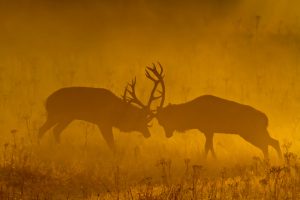Holly, by Michael Blencowe for Sussex Wildlife Trust
I’m sure you’ll agree that these are crazy times, folks. Back in Ancient Rome they had a festival – Saturnalia – which saw their society turn upside down for a week each December. It seems Saturnalia’s traditions of chaos and mayhem are now the daily norm for us Brits but, as we career towards Christmas, we have another thing in common with Saturnalia. We will soon be paying our respects to the Holly tree.
Holly has been celebrated in many traditions over the centuries because, as a native evergreen, its vibrancy in the dead of winter could easily be mistaken for immortality. Holly was the sacred tree of Saturn, the Roman god of agriculture. In pagan tradition, the Holly King ruled over the Oak King from Midsummer to Midwinter. Holly was easily adopted by Christians, who saw many links between the tree and the life of Christ. Today, Holly remains a centrepiece of our Christmas decorations, cards and cakes.
Each Holly tree is either male or female. While both produce delicate white flowers in May, it’s only the female Holly that bears a berry as red as any blood. When these berries are produced in profusion, it’s taken to be a sign of an oncoming hard winter -although in reality it’s the outcome of a successful spring. Holly’s prickles provide protection for nesting birds, their flower buds are food for the Holly Blue butterfly’s caterpillar and their ripe berries are essential for thrushes.
If you’re after a tree filled with folklore then Holly must take a bow. So if you’re planning to deck your halls with boughs of the stuff this Christmas, here’s a quick user guide. First off, never cut down a Holly tree – that’s guaranteed bad luck, a superstition which has spared many Holly trees from the woodsman’s axe. And make sure you leave Holly trees in your hedgerows to prevent witches from running along the top. If you bring Holly into your home at Christmas, it’ll help protect you from those pesky festive faeries. Only female Holly leaves under your pillow will allow you to predict your future in your dreams. Oh, and don’t forget to get rid of your Holly decorations before Twelfth Night (but don’t burn them, that’s bad luck too). Holly trees will protect you against lightning strikes (I’m not sure if this has been scientifically proven so don’t blame me if you still get zapped). And don’t eat the berries, they’re poisonous, but if you have smallpox you can drink an infusion made from the leaves.
Stick to those rules folks and you’ll have a peaceful Christmas. Me? I’ve had enough of the state of the world today. I’m going to pour some wine, put on my toga and pretend I’m in ancient Rome. Somebody pass me my fiddle.
Sussex Wildlife Trust is a conservation charity for everyone who cares about nature in Sussex. Founded in 1961, we have worked with local people for over half a century to make Sussex richer in wildlife.
We rely on the support of our members. Please consider joining us. Your membership will help us challenge decisions that threaten wildlife, care for more than 30 nature reserves, and inspire the next generation about the wonders of the natural world. It’s easy to join online at sussexwildlifetrust.org.uk/join


